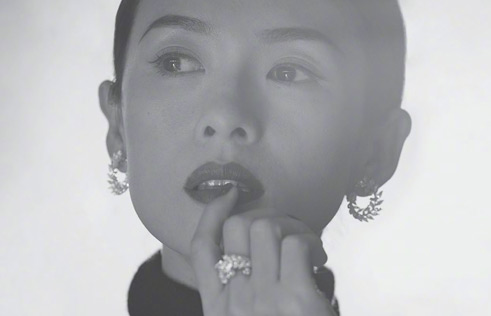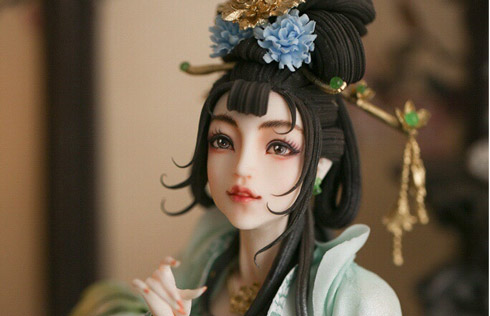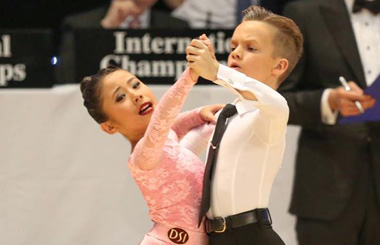Selling tea to China
 |
|
An exhibitor proudly shows off her tea to a potential customer at the International Tea Expo in Beijing recently. Provided to China Daily |
The country's appetite for its 'national beverage' is big enough for all comers, even those from abroad. Ye Jun reports from Beijing.
Selling foreign teas in the country where tea originated cannot be an easy job, but some foreign companies have tried, and found that Chinese consumers appreciate their imported products.
Alice K. Kithika's booth at the Beijing Exhibition Center looks rather small, compared to those of the big Chinese companies. As the only company from Kenya at the Beijing International Tea Expo, Kithika's One Touch Ltd represented not only her brand, but also Kenya tea.
It was only the second time she had come to China, after she first followed a group to Guangzhou last year.
She brought different varieties of "cut tear curl" teas, of different sizes, in different packages. Although she did not speak Chinese, she prepared brochures in Chinese for interested visitors.
"I'm here to let people know we have black tea," she says.
"Then, I hope to get a partnership with Chinese companies to market our teas in China."
She says Kenya black tea has rich aroma and full body because of the region's volcanic soil.
 |
|
Alice K.Kithika shows off her Kenyan tea. |
In the same hall, just opposite Kithika's booth, many Chinese were attracted to a beautiful display of tea cans and teapots at the stall manned by Akira Ikegaya, president of Nittoh Sangyo, from Shizuoka prefecture of Yaizu City, Japan.
The prefecture is one of Japan's largest producers of green tea, and Nittoh Sangyo has 70 years of history making tea utensils.
It makes 20 million tea cans in a year, which represents 40 percent of the Japanese market, according to Ikegaya.
Since June 2010, the company has set up an office and two shops in Beijing. The company has participated in tea expos not just in Beijing but also in Shanghai and Hangzhou.
"Tea originated from China. Japan followed tea culture from China's Han, Tang and Song dynasties (206 BC-1279)," says Ikegaya.
"We have fused Chinese and Japanese culture in the making of tea sets, which we now hope to bring back to China."
He says tea is subject to the influence of moisture and oxidation, and tea caddies made with high quality steel can help protect fragile, high quality Chinese teas.
Ikegaya's colleague, John R. Iwaki, represents Nittoh Sangyo in Beijing.
He says the company spent a lot of effort on the design of tea cans, to make them so beautiful people would not want to discard them.
The tea cans feature traditional patterns of pine, bamboo, plum, silk and pottery in their designs. Lacquer painting and gold carving are used for high-end products.
Also at the show was Beijing Dongli Garden International Trading, which has been selling Indian tea since 2006.
The company started out selling two metric tons of Indian black tea in a year. But now annual sales have grown tenfold.
"We've done really well for this expo. Foreign customers unquestionably like our teas. Chinese people like the unique aroma of Darjeeling," Xiao Juan, its general manager, says.
"My customers are tea lovers who are between 20 to 50 years old. Some of them have been overseas, while others want to broaden their understanding of teas."
Lately she has found a much greater demand for milk tea, especially among young Chinese people, and she has set out to meet that demand.
For the next step, she plans to guide lovers of Indian tea in China to drink teas from different tea gardens in India with different flavors, just like "chateau wines", she says.
Ravimal Handuwala from Sri Lanka also sees a bright future for foreign black teas in China. His companies deals with Ceylon teas, and has agents in 10 Chinese cities, including Beijing, Guangzhou and Xiamen.
Handuwala says the Chinese government has given strong support to Sri Lanka companies, allowing them to attend tea expos around China for free.
There are 10 to 15 Sri Lankan tea companies in China, he estimates, selling teas retail, wholesale and online.
Handuwala's company came to China in 2010. Last year, sales increased 30 percent over the previous year, with a turnover of $300,000 or 75,000 kilograms of tea.
He, too, has found milk tea is growing very popular among young Chinese. In fact, the company plans to open two tea bars in Beijing and Guangzhou.
The major tea market for Sri Lankan exporters used to be Europe, but now they are selling to the whole world, especially to Russia, the Middle East and Asian countries, according to Handuwala.
He says he did not feel there was competition between Sri Lanka teas and Chinese teas "because they are so different".
Foreign teas are a good complement to Chinese teas at the Beijing International Tea Expo, according to Wang Qing, deputy director of China Tea Marketing Association.
"China is a big tea producing country. But consumers need variety," says Wang. "With China's large number of tea lovers, it is not difficult for foreign teas to find people who can appreciate them."
Meanwhile, the black-tea market has surged in China in the past two years. Jinjunmei, a high-end Fujian black tea, as well as teas from Xinyang of Henan, and Zunyi of Guizhou, have been key to the re-awakening.
"Black tea is a new hot item for consumers," says Wang. "Last year China produced 130,000 tons of black tea."
Black teas and white teas were new best-sellers at the expo this year because of their health benefits, he says.
Contact the writer at yejun@chinadaily.com.cn.






















